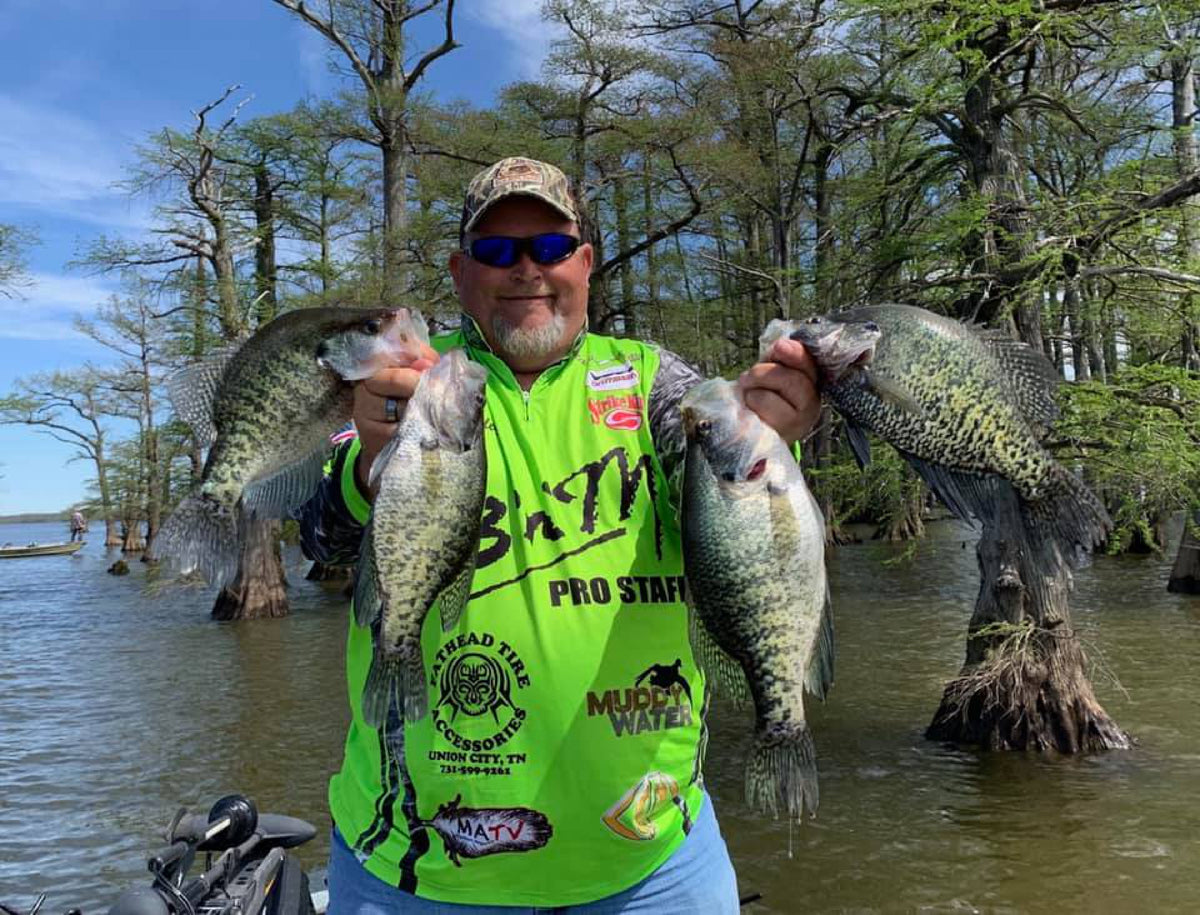
B’n’M Pro Series: Live Image Fishing Tips
B’n’M Pro Series: Live Image Fishing Tips
Editor’s Note: This week’s tips and tactics article is the second in a multi-part series from B’n’M Crappie pros on how they use Live Image technology and forward-facing sonar to catch crappie. This week we talk to Grenada Lake, MS crappie guide and Hall-Of-Fame Angler John Harrison.
By: Phillip Gentry
At the heart of his fishing experience, Grenada Lake crappie guide John Harrison, from Calhoun City, Mississippi, is a jig fisherman. Harrison spent most of his fishing life with a jig pole in hand, working a crappie jig around a tree stump or stick up. He was exceptionally good at it. In his own words, the one thing that has made him a better jig fisherman is the advent of forward-facing sonar.
“I love fishing stick-ups, things you can see on the surface. With this LiveScope sonar now can you not only see if there is a fish on a stick up, but you can also tell what side of it he’s on, is he facing in or facing out, and of course how deep below the water he is,” said Harrison.
The guide said when he saw other anglers on the crappie trails winning tournaments with single jig poles again, he knew he had to get in on the action. Although he still has his larger crappie fishing boat, a 21-foot War Eagle Blackhawk, set up to troll with rod holders, he mounted his Garmin LiveScope unit to his smaller War Eagle, the one he always thought of as his jig fishing boat.

Harrison loves to fish structure using the Live Image technology and rarely tries to chase a fish down out in open water.
“I have a 1548 War Eagle that’s always been my single pole boat,” he said. “It had a little Humminbird unit on it, but nothing fancy, just enough to see underwater stumps and tell the water depth.”
Harrison has fished nearly every day with his Livescope unit since he mounted it there a little over a year ago. He said it was a real gamechanger in the Fall when big white crappie stayed glued to the stumps as the water in Grenada Lake was drawn down.
“I’d have to say it’s a 12 month out of the year producer, although I was still learning the unit during the spawn,” he said. “I got better with it after the fish started moving from the shallows back out to deeper water.”
Harrison said his two favorite Live Imaging poles are a 12-foot Buck’s Best Ultralight and a 16-foot BGJP. He fishes both rods with 8-pound Gamma fishing line in clear monofilament. He said he tried braided line for a little while when other Live Image anglers were switching over to braid, but he did not really see the need for it.

Using his 15-foot War Eagle Jig Fishing boat, Harrison will ease up to a stick up and pitch soft plastics from a distance of 12 – 15 feet away.
Because he is nearly 100% structure oriented when he is jig fishing, Harrison will tie the heaviest jig he can get away with on his line to get the bait down quickly to the fish as he sees them om on the screen.
“I was very surprised at how the better fish on a stick up with spook off when you get within 12 feet of the structure,” he said. “That’s why I like the longer rod and the heavier jig head so I can pitch to the fish as soon as I see where he’s at. A lot of times on these bigger fish, you only get one chance to catch them before they’re gone.”
He said he rarely uses live bait when he is jig-poling even before he started using the Garmin unit. On occasion he may tip the jig with a minnow, but for the most part he fishes a lot of Crappie Magnet Slab Curlies on a locally made Grenada Lake Tackle jig head.
“During the winter, I do like to use a solid gray hair jig with a little blue tinsel tied in,” he said. “That bait is a 1/32 oz. jig on a #2 hook because crappie seem to like a smaller bait in cold water.”

Harrison’s advice was not to give up. Once you master the learning curve, catching crappie gets much easier relying almost solely on the graph.
To get a 1/32 oz. jig head down to the fish quickly, he often adds one or two #5 split shot about a foot above the bait. He also sticks to a smaller bait if he is targeting black crappie on a particular lake, but for the most part, he is catching white crappie at Grenada Lake using larger plastic baits.
One difference Harrison points out between himself and others is that he uses a hand-controlled trolling motor and has mounted the LiveScope transducer directly to the shaft of the trolling motor.
His final advice to new LiveScope users was not to give up. Harrison said in the first two weeks he used his unit, he only caught one 10-inch fish, but he knew he had to keep plugging away and figure it out.
“I have friends and clients who want to fish with me to learn,” he said. “They’ve had a unit for 6 months and they hate them. You have to put time in on the water and get the feel of this. It’s a whole new way of fishing and it takes a little while to get the hang of it.”
Wherever fishing takes you, B’n’M has been there. To view all our fish catching products, Visit our website at bnmpoles.com.
Also in Weekly Tips and Techniques

Winter Crappie Fishing Strategies with Lance Hughey
B’n’M pro-staffer Lance Hughey said it never gets too cold to catch crappie.

North Texas Fall Crappie Fishing with Brian Carter
Texas crappie pro-staffer Brian Carter loves to pitch jigs at standing timber during the fall of the year.

Summer Crappie Fishing with Billy Blakley
B’n’M pro-staffer Billy Blakley claims the copious amount of rainfall so far this year has created some great summer crappie fishing on Reelfoot Lake.
